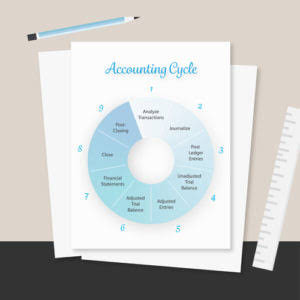
Continuous negative cash flow cycles will deplete your bank accounts over time and result in a cash crunch. This scenario is expected for a period when your business is new, or it is going through a growth and expansion phase. As we have seen, financing activities can generate either a positive or a negative cash flow. In this example, the company has a positive cash flow in the given period, which can be Bookkeeping for Chiropractors used for its other financial obligations.

Relationship between cash flow from operating, investing, and financing activities

However, it’s still important to monitor these numbers to ensure you’re able to respond to an unforeseen challenge or afford a growth opportunity. If you don’t, you might make a move that isn’t financially viable for your company at that time, potentially creating a very restricting scenario and limiting what your organization can achieve. Any business that has a financing relationship should also evaluate its Cash Flow From Financing Activities (CFF) on a consistent basis to make sure they’re in a good financial position. By doing so, you can stay on top of your borrowing and notice problems before they go too far. However, it does not measure the efficiency of the business in comparison to a similar industry.

Credit management software
- Walmart’s investments in property, plant, and equipment (PP&E) and acquisitions of other businesses are accounted for in the cash flow from investing activities section.
- It is used for indicating the cash amount that an organization will bring in from the regular operations and activities of the business.
- In contrast, the income statement is important as it provides information about the profitability of a company.
- With over $2 billion secured through 25,000+ transactions since 2007, we’re uniquely capable of helping you secure the funds you need to grow your business.
- It comprises three sections – CFO or cash flow from operations, CFI or cash flow from investing activities, and CFF or cash flow from financing activities.
- The better these details get maintained, the more accurate your accounting will be.
As any savvy cff formula investor knows, cash flow is one of the most important indicators of a business. As seen in this BBC case, a negative cash flow isn’t necessarily a cause for alarm. In fact, some of the largest cash outflows – repayments of borrowings of £205M and payment of obligations under leases of £161M – can be viewed as positive signs for investors and the market. By repaying its debts, BBC demonstrates its ability to meet its financial obligations. To get started, create a list of all financing activities that have taken place over a certain period of time.
Managing personal finances with cash flow from financing activities
Cash flow is the total amount of cash that is flowing in and out of bookkeeping the company. Free cash flow is the available cash after subtracting capital expenditures. However, the cash flow statement also has a few limitations, such as its inability to compare similar industries and its lack of focus on profitability.
- You need to have a solid understanding of your cash flow to make educated decisions in your business moving forward.
- Debt financing comes in a variety of forms, including term loans, business advances, equipment financing, and much more.
- Thus, CFF may be helpful for investors when considering whether to inject money into businesses like yours.
- Cash flows from financing activities result from transactions with the company’s owners and creditors, like issuing and repurchasing stock, borrowing, and repaying Debt.
Should Cash Flow From Financing Be Positive or Negative?
A negative balance could prevent you from qualifying for certain financial services, like additional financing, which can potentially put the brakes on your growth and development. Cash flow statements are important as they provide critical information about the cash inflows and outflows of the company. This information is important in making crucial decisions about spending, investments, and credit. The cash flow statement acts as a corporate checkbook to reconcile a company’s balance sheet and income statement.

One of the categories on the cash flow statement is cash flow from financing activities, which includes all cash that has been used to repay loans. Loan repayment can have a major impact on a business’s cash flow, so it is important to carefully track and report this information. The cash flow statement is one of the three financial statements that businesses use to track and report their financial performance.
- Until you actually look at one, you see that the statement is split up into sections, each providing finance professionals with a little more insight into the health and profitability of a business.
- This method of calculating cash flow takes more time since you need to track payments and receipts for every cash transaction.
- On the other hand, the Income statement, also referred to as the “profit & loss statement,” is known to focus on the overall income & expenses of the business.
- These inflows and outflows are then calculated to arrive at the net cash flow.
- If the company has surplus cash, it can be assumed that it operates in the so-called safe zone.
Cash Flow from Financing (CFF)

Issuance of stock options to employees is an example of a financing activity that does not show up in cash flow from financing activities. An equity transaction involves buying or selling ownership shares in a company, typically in the form of shares or stock. The cash flow statement is a reliable financial performance indicator to assess your business’s financial health and stability. The cash flow statement is an essential financial document for investors and creditors while conducting due diligence and making projections of your business. Negative cash flow means that your business is spending more money than it is earning.
In contrast, share buybacks, debt repayments, and dividends are represented within parentheses to signify that the item is a cash outflow. Cash flow is the movement of money into and out of a company over a certain period of time. If the company’s inflows of cash exceed its outflows, its net cash flow is positive. Public companies must report their cash flows on their financial statements.